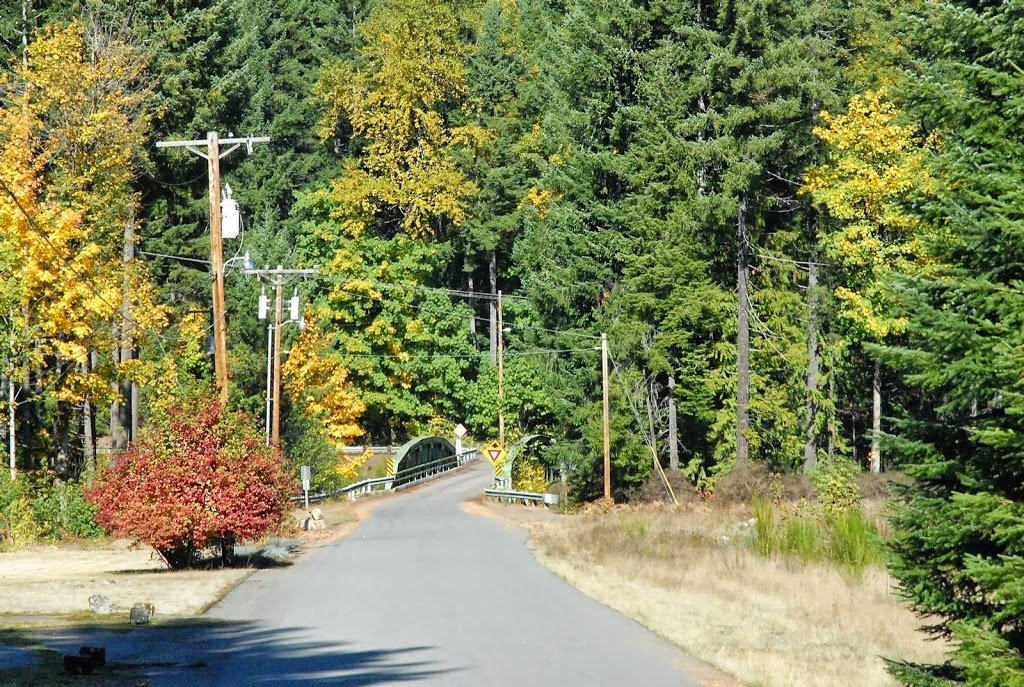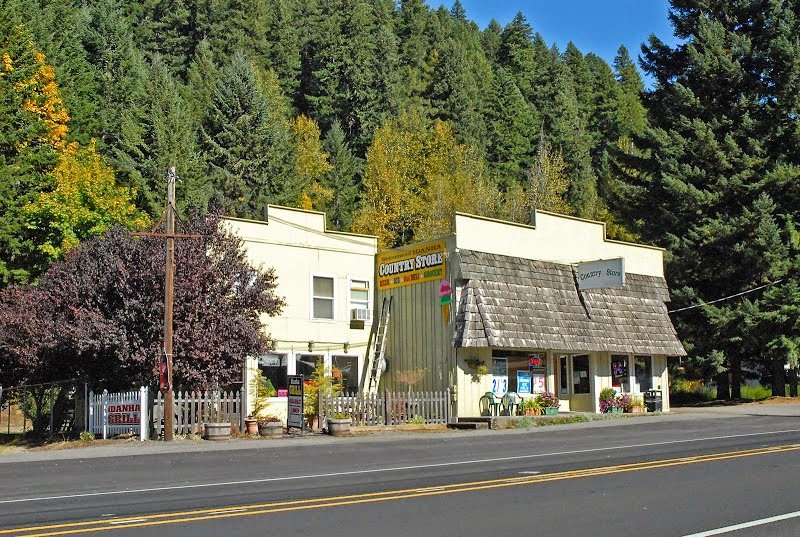We were surprised to learn that the history of the Idanha includes a Salem pioneer, John Minto. In 1873, before the failed attempt of the railroad builders to cross the Cascade Mountains in the 1880s, John Minto was appointed by Marion County authorities to discover if there was an Indian pass through the Cascades as reported by trappers. The one he located was named for him. In 1882, he surveyed a lower pass seven miles further south, now known as Santiam Pass. A visitor finds this area now returned to the natural beauty of earlier days as seen in this photograph.
The mountaineering of John Minto is honored in History of the Pacific Northwest, Oregon and Washington, published by the North Pacific History Company of Portland, Oregon in 1889: “In following the waters of the North Santiam river to their sources, at the summit of the range, Minto proved himself, says Chief Engineer Eccleson of the Oregon Pacific Railway Company, a natural engineer, and discovered the best natural railroad pass yet known across the range.”
“Muskrat Camp” was the name of an original trappers’ outpost near the present city of Idanha. In 1889 the first permanent settlement was founded with the establishment of the camp for workers building a railroad to connect the Willamette Valley to Eastern Oregon and eventually join a transcontinental route. The grand scheme, proposed by Colonel T. Egenton Hogg collapsed a because of difficulties with shipping at the Pacific port of Yaquina Bay, Oregon where the line was to begin, and various financial problems within the corporation.
By 1891, a small town was created by railroad workers and loggers. The first hotel was built about 1887, serving sportsmen attracted to the abundant hunting and fishing opportunities. The proprietor selected the inviting name of Idanha. Travelers associated this Indian-sounding name with a popular soft drink made by the Bottled Mineral Water Company of Soda Springs, Idaho. The origin of the name may have come from Indian legend in Idaho where the name is interpreted as the Spirit of Healing Waters. By 1889 the rail line was complete and excursion trains brought tourists to the hotel from the Willamette Valley.
The dramatic train ride through the canyon made the resort a popular destination in the 1890s. Idanha’s rail service continued until the 1950s, when the track was removed for development of Detroit Lake situated over the historical roadbed of the former Oregon Pacific Railroad. However, highway access to Idanha had improved in the 1920s when the United States Forest Service built a road to connect with the South Santiam Public Road. From that time, the automobile became the preferred transportation. However, nature has occasionally defeated even highway commerce: periodic flooding, landslides, bridge destruction and earth tremors from deep in the mountains have all caused disruption of daily routines.
The early growth of the community led to the establishment of post office in 1895 with Alma Kiesel as postmaster. The structure was placed on built on a railway flatcar, moved into the city and served until 1899, summers only. A permanent post office was established in 1937 at the corner of Highway 22 and Main Street and remains the crucial to the residents. As one resident said, “Our main focus of our identity is the post office, but with the new postplan, we will either lose it completely or be down to 2 hours a day. Our postmistress is usually the first person who is contacted regarding the town by travelers or people wanting to know about property. She is a wonderful advocate for our city.”
Idanha stands within the Willamette National Forest and controversies have developed about use forest lands: are these government-owned lands merely playgrounds for the increasing American urban population or are they producers of timber goods and services? The forest service has responsibility to prevent fires, typically in the dry summer months. In the past, this led to occasional summer closure of mills, causing local economic hardships. The solution was for Idanha to establish its own fire protection through what became the Idanha Rural Fire Protection District. Once the fire hall was built and staffed, the next step was to incorporate. This was accomplished in 1949.
Idanha memories since incorporation include these from a present resident: “At one time there were 5 mills working in the area. We had a railroad, doctor’s office, stores, car lot and a lot more with a population of over 400 people. We were just as big as Detroit before they moved the town. The little slough by my house used to be where the water generated power plant used to sit that provided power for the town. In 1964 there were 21 houses lost in the flood. We lost two small wooden bridges and roads that connected New Idanha with the main highway. There was no way to get in or out. I also remember when we got 6 feet of snow all at once and had to call Marion County Emergency Services. Since the majority of our residents were in Linn County, they stepped up and provided us with snow removal. ”
An excellent resource for learning about Idanha’s resolute and resourceful community of residents is Heartland of the Cascades a History of Idanha, Oregon by Barbara K. Bolte. A copy may be found in the Lyons Library. The following quotation from that book expresses the character of the city: “Over the years, Idanha has been many different things to many different people. Originally, it was the homeland of the Santiam band of the Kalapuyans. Later, it became a resting place for weary travelers and fur traders who passed through the area. Tourists made it their destination when the railroad was new and day excursions fashionable. When the settlers and loggers came, Idanha bustled with activity. In times of its history, Idanha has been virtually deserted, a ghost town left vacant of everything but echoing memories. At other times, it teemed with families and enterprises. Always, Idanha has been a special place. It’s beauty, tranquility and resources are surpassed by no other place on earth.”
Today Idanha is about one square mile in size and recently was reported with a population of 134. It is centrally located between Salem and Sisters, stretching over 2 -1/2 miles on Highway 22 and is divided by the North Santiam River with Marion County on the north side and Linn County on the south. This includes land on which the mills stood at the time of incorporation. The city maintains a lending library in the City Hall. Other public services along Highway 22 are the fire station and the Post Office. A few feet to the east, the Country Store also provides the Grill, a small restaurant.
When traveling past Idanha on Highway 22, take the Church Street exit. After crossing the bridge into Linn County, continue to the city park (kids will enjoy the play equipment) where an Annual Summertime Pot Luck dinner is celebrated. Beyond the park is the beautiful small church among the tall trees. This is a neighborhood of attractive homes.
Also from the highway, near the City Hall, is an exit to less developed Main Street (Old Idanha), the Log Pond and Riverside Drive along the Marion County side of the river.
The city is surrounded by the Willamette National Forest and bountiful recreational options including hiking, camping, and fishing. Get more information at the Detroit Ranger Station, 44125 North Santiam Highway SE (503-854 3366). The western approach to Minto Pass is FS Tr. No.3437 via the 3436 trail. A total of 7.7 miles to the PCT.
Idanha is in a beautiful mountain location. We recommend you stop at the Country Store for a chat and to buy a few picnic provisions. Then park for lunch and a quiet hour by the river in the center of this Cascade Mountain community.




2 Comments